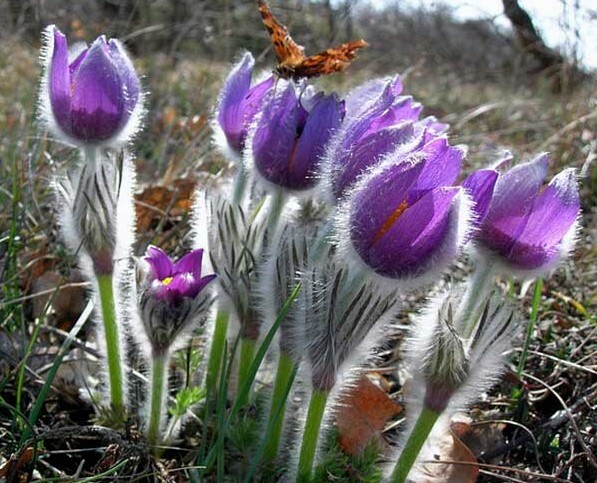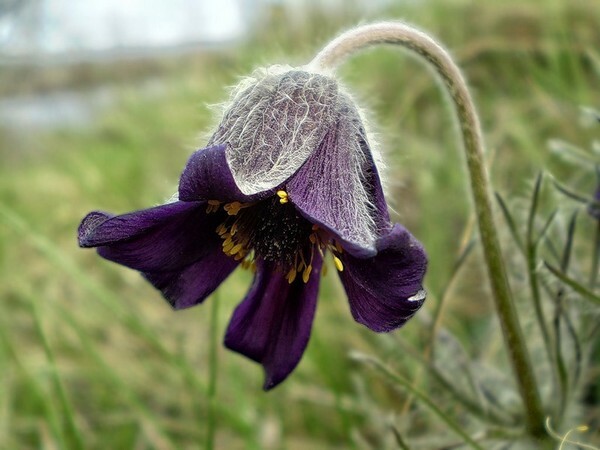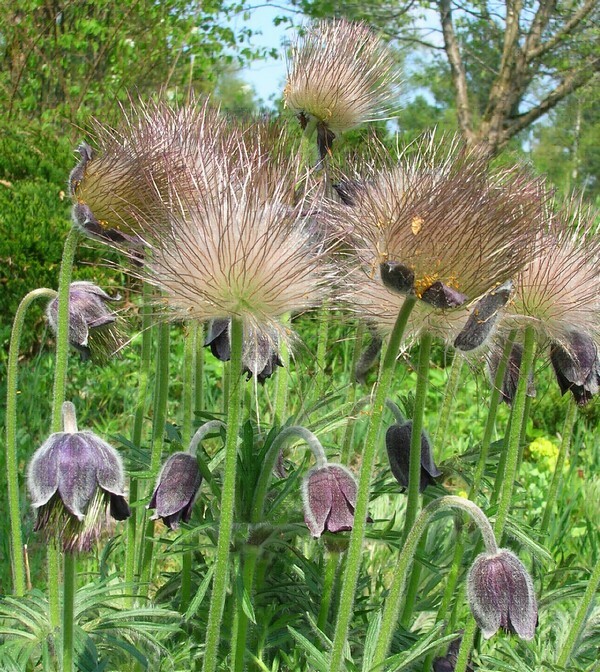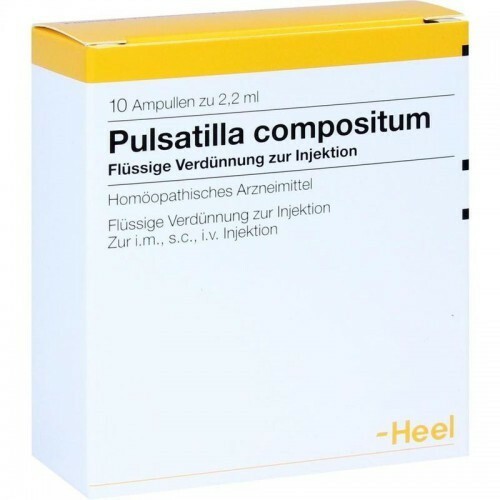- Botanical Description
- Chemical Composition
- Therapeutic Properties
- Raw Material Preparation
- Methods of Application
- Precautions
Sleep-grass, also known as a meadow herb, is a perennial herbaceous plant of decorative and medicinal value. She is the representative of the genus Lumbago family. In folk medicine, bactericidal, sedative and antifungal agents use herb plants.

Botanical description
Meadow shoot prefer sunny, dry terrain with light soils rich in calcium salts; therefore, in places where the sleep-grass mainly grows, pine forests, mixed forests, forest edges, slopes and sand hills predominate. Reproduction is carried out by seeds or by dividing bushes.
The root is powerful, vertical, single or multi-headed( in old plants), painted outside in a dark brown color. Each year, from it grows a few leaves collected in a basal rosette, and two or more flower arrows.
The stem is upright in height from 10 to 40 cm, densely covered with soft hairs. Floral arrows in the cross section are round, reach a length of 20 cm, they come out of the axils of the leaves, and carry one drooping flower on a long pedicel, surrounded by a cloverleaf. The length of the peduncle sharply increases at the time of fruit ripening and exceeds the length of the flower arrow. The coverlet consists of almost upright leaflets, divided into narrow linear segments, densely covered with hairs.
Radical leaves appear after the flowering of the plant and die in the fall. They have long petioles, the leaf blade is broadly ovoid in outline, pinnately dissected with linear pointed lobes. First, the leaves are densely covered with soft white hairs, and later become bare.

The flowering period is in April and May and lasts about a month. The flowers are single, violet in different shades, in the form of a bell. Perianth simple, consists of 6 elongated, outwardly bent at the top of leaves, on the outside densely covered with hairs. Stamens numerous yellow, half as long as tepals. They are located on a convex receptacle, the outer stamens are shorter than the inner ones. The pistils are at the top of the peduncle, each with a single-cavity ovary and a long, hairs-covered column.

Fruits ripen in June-July. They are oblong, hairy, numerous nuts with a long pinnate-hairy awn( up to 5 cm).
Chemical composition
For medicinal purposes, folk medicine uses plant grass. To date, its chemical composition has been studied in some detail. It is established that the ground part of the plant contains the following biological substances that determine the therapeutic properties of the meadow chamber:
- organic acids;
- alkaloids;
- vitamin C;
- steroids( sitosterol);
- resins;
- gamma-lactone( ranunculin)
- tanning agents;
- triterpenoids( beta amirin);
- flavonoids;
- anthocyanins( derivatives of perargopilin and delphinidin);
- anemonin;
- essential oils;
- minerals( P, Al, Fe, Zn, I)
Important: For therapeutic purposes, another open lumbago is used, also called sleep-grass. The botanical description of it, as well as its composition and healing properties, are similar to that of meadow, it differs only slightly in the form and color of the flower.
Medical properties
Sleep-grass has antihypertensive, sedative, hypnotic, antispasmodic, antimicrobial, fungicidal, hepatoprotective, diuretic, anti-inflammatory and analgesic effect. It stimulates the respiratory function and slows the heart rate.
In folk medicine, the means based on it are used to treat:
- glaucoma;
- of the initial stages of hypertension;
- enhanced heart rate;
- of insomnia;
- increased excitability;
- convulsions;
- metabolic disorders;
- hysteria;
- disorders of the menstrual cycle;
- headache, dizziness.
Spasmolytic action of the lumbago facilitates cough relief in whooping cough, bronchitis, bronchial asthma, reducing headaches with migraine.
The healing properties of sleep-grass are used for some gynecological problems. It helps to restore the functions of the reproductive system, normalizes the hormonal background and menstrual cycle. Previously, it was used in labor clashes to accelerate childbirth and reduce pain.
External infusions, decoctions and tinctures of the meadow are used for the treatment of burns, rinsing wounds, lotions for fungal skin lesions, baths for skin diseases, rubbing with articular pains with rheumatism and gout.
Herb plants are used in homeopathy. Various preparations are made from it. For example, Pulsatilla compositum, which has a complex effect on the body and has a wide list of indications: viral infections, rheumatism, skin diseases, hypogalactia, bronchitis, tonsillitis, depression, etc.

Procurement of raw materials
Preparing sleep-grass shouldin the flowering period, but it is not recommended to do this in the summer, since at this time it contains the maximum amount of toxic substances. The grass is cut, cleaned from foreign matter, laid out in one layer on paper or natural cloth and dried outdoors in a shade or in a closed but well ventilated room. Dry raw materials are stored in bags of paper or small linen bags for not more than 3 years.
Dried grass can be used for medicinal purposes no earlier than in six months. It is believed that this time is enough to completely evaporate the toxic compounds that can cause poisoning of the body.
Warning: During the preparation of meadow lumbago, hands should be protected with rubber gloves, since fresh grass juice, when ingested, causes inflammation and burns.
Methods of using
In folk medicine, sleep-grass is used as infusions, decoctions, alcohol-containing tinctures inside or outside. In some diseases, fresh plant juice is used.
Vodka tincture for rubbing
Dry sleep grass in an amount of 10 g is ground, mixed with 200 ml of vodka and insists the composition of 7 days in a dark place. Used externally for grinding with pain syndrome with joints and rheumatism.
Water infusion for the treatment of hypertension, glaucoma and mental disorders
Dry raw materials( 40 g) pour a glass of boiling water, insist 40 minutes and filter. Take the drug 15 to 20 ml 3 - 5 times a day through approximately equal intervals between meals. When hypertension treatment lasts 2 - 3 weeks, with mental disorders - 2 - 3 months. For mental illnesses, use infusion of 30-50 ml 3 - 4 times a day for several weeks.
Infusion for external use
Grind dry grass( 1 tbsp.) Pour 200 ml of cool boiled water, insist overnight( 12 h) and filter. Apply for lotions and rinses wounds and inflammations on the skin.Decoction for medicinal baths
The dried raw material of meadow( 4 tbsp.) Is crushed, combined with 1 l of water and boiled over low heat for 3 to 5 minutes. Cool the composition to room temperature, filter and pour into a bath.
Precautions
Treatment with a megacraft is contraindicated in the case of:
- gastritis;
- inflammatory processes in the kidneys, liver;
- Pregnancy and Breastfeeding;
- intolerance or allergies;
- diseases of the intestines, stomach.
In case of an overdose, a lesion of the gastrointestinal mucosa is possible.
Important: Use of folk remedies based on sleep-grass for the treatment of any disease is only permissible after consultation with the doctor. The plant belongs to the poisonous and if used improperly can cause significant damage to the body.
Video about the healing properties of the meadow chamber:
